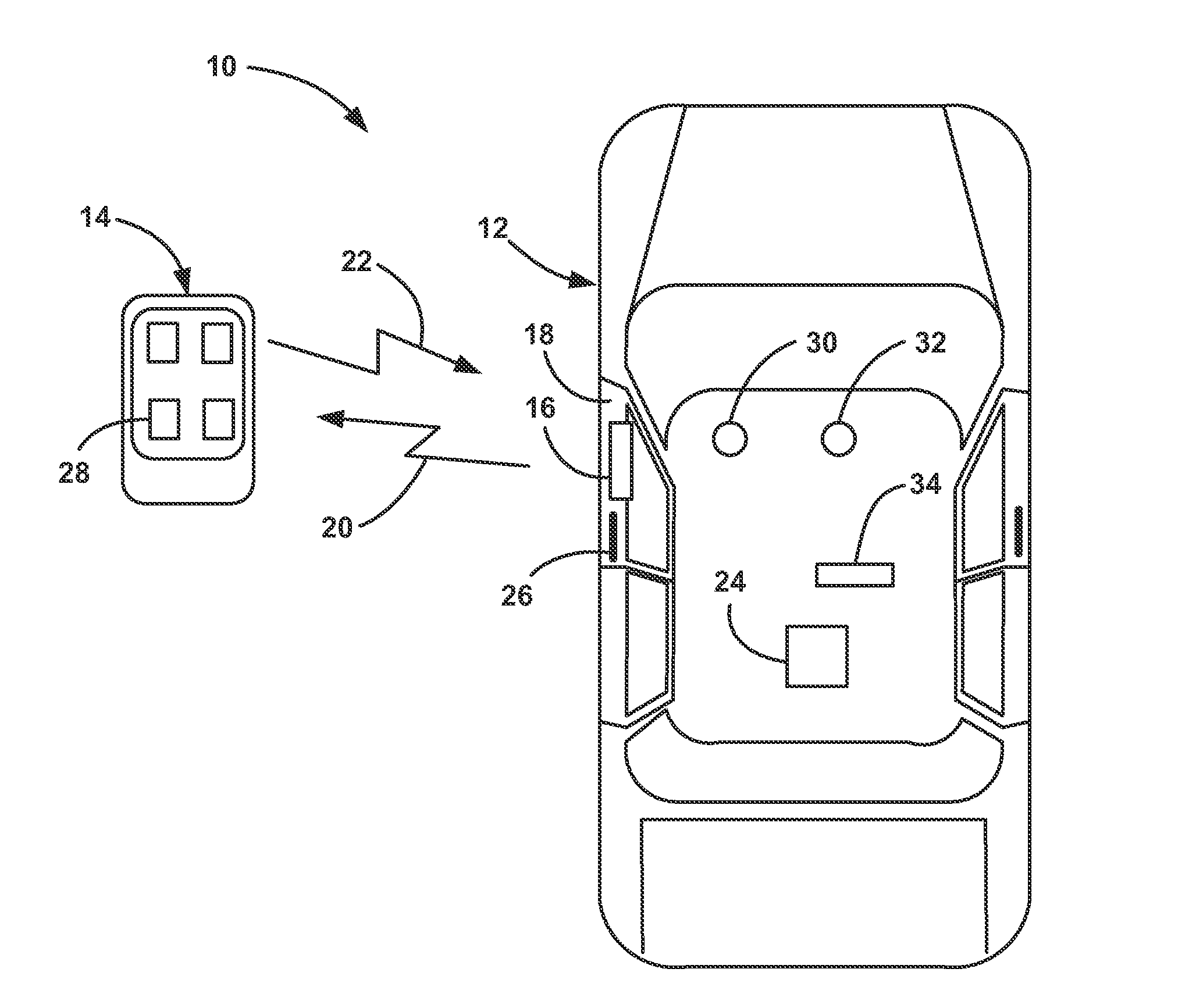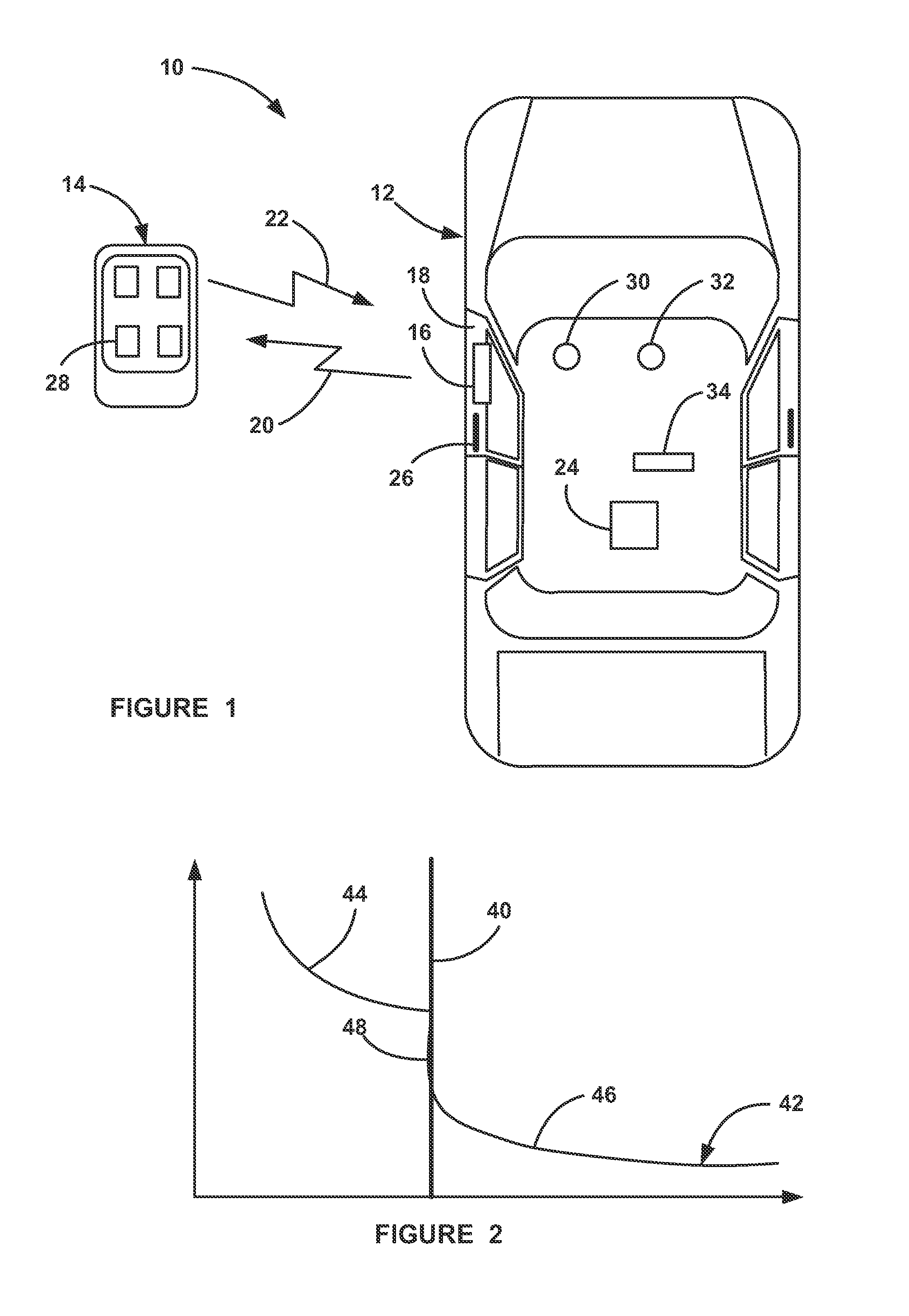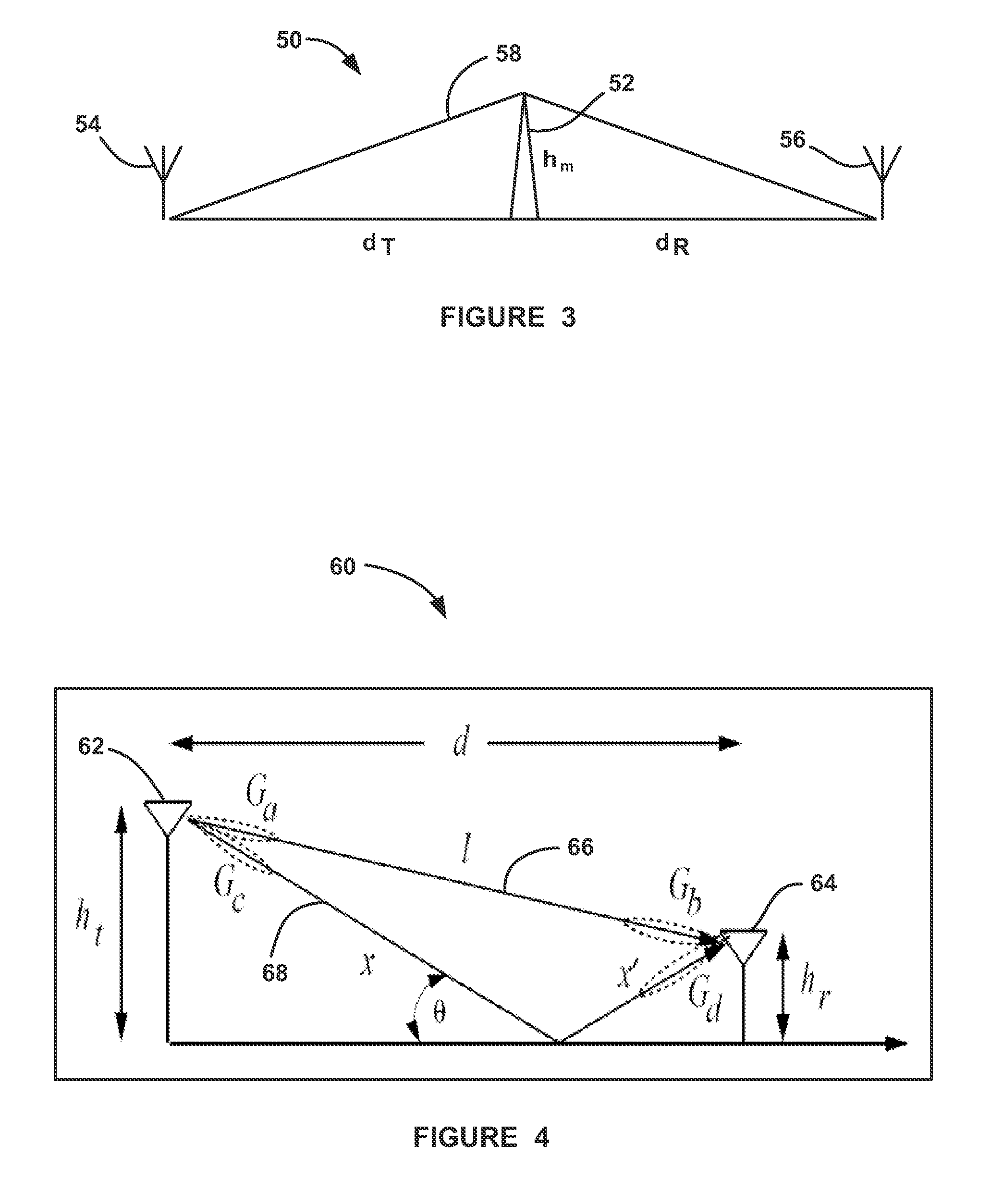Vehicle integration of ble nodes to enable passive entry and passive start features
- Summary
- Abstract
- Description
- Claims
- Application Information
AI Technical Summary
Benefits of technology
Problems solved by technology
Method used
Image
Examples
second embodiment
[0035]FIG. 6 is a flow chart diagram 100 showing a process for implementing the As above, the algorithm determines whether the FOB 14 is detected at decision diamond 102, and if so, determines the transmit power of both the signal transmitted by the FOB 14 and the transmit power of the signal transmitted by the secondary BLE node 34 at box 104. Likewise, the algorithm also determines the power of the signal received from the FOB 14 and the power of the signal received from the secondary BLE node 34 by the primary BLE node 16 at box 106. The algorithm then calculates the effective path loss for both the signal transmitted by the FOB 14 and the signal transmitted by the secondary BLE node 34 as the difference between the receive power and the transmit power of the signal transmitted by the FOB 14 and the signal transmitted by the BLE node 34 at box 108. The algorithm then determines if the effective path loss of the signal transmitted by the FOB 14 is greater than the effective path ...
third embodiment
[0036]FIG. 7 is a flow chart diagram 120 showing a process for implementing the As above, the algorithm determines whether the FOB 14 is detected at decision diamond 122, and if so, determines the transmit power of the signal transmitted by the FOB 14 at the primary BLE node 16 in the door at box 124 and determines the transmit power of the FOB 14 at the secondary BLE node 34 at box 126. The primary BLE node 16 is installed on the vehicle door 18 in such a manner to provide limited / no signal blockage to the signal from the FOB 14 when the FOB 14 is located outside the vehicle 12. As an example, the primary BLE node 16 could be packaged in the exterior door handle 26 or in exterior body trim. This will result in a higher signal level received from the FOB 14 by the primary BLE node 16 when the FOB 14 is outside the vehicle 12. Similarly, when primary BLE node 16 is packaged in such a fashion, the signal level will be lower between the FOB 14 and the primary BLE node 16 when the FOB ...
PUM
 Login to View More
Login to View More Abstract
Description
Claims
Application Information
 Login to View More
Login to View More - R&D
- Intellectual Property
- Life Sciences
- Materials
- Tech Scout
- Unparalleled Data Quality
- Higher Quality Content
- 60% Fewer Hallucinations
Browse by: Latest US Patents, China's latest patents, Technical Efficacy Thesaurus, Application Domain, Technology Topic, Popular Technical Reports.
© 2025 PatSnap. All rights reserved.Legal|Privacy policy|Modern Slavery Act Transparency Statement|Sitemap|About US| Contact US: help@patsnap.com



